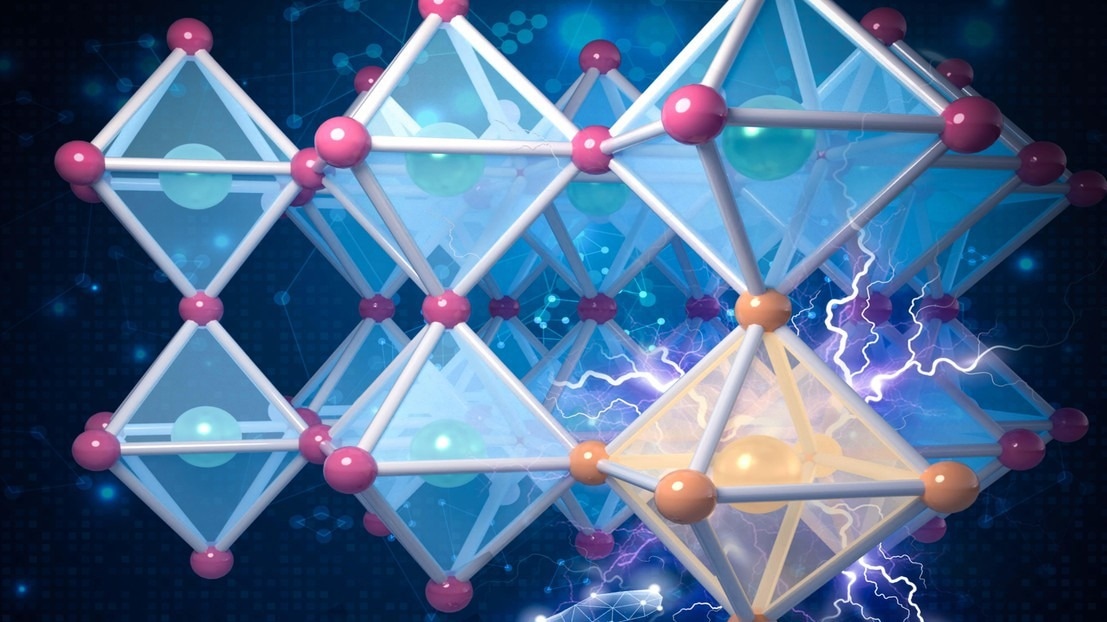Reviewed by Lexie CornerMay 21 2024
Researchers from the Swiss Federal Institute of Technology Lausanne discovered perovskites with the perfect band gap for solar applications. By inculcating a machine-learning program, an advanced version of Density Functional Theory, scientists found approximately 14 new solar cell materials. These results were reported in the Journal of the American Chemical Society.
 Through the generation of a dataset of accurate band gaps for perovskite materials and the use of machine learning methods, several promising halide perovskites are identified for photovoltaic applications. Image Credit: Haiyuan Wang, Swiss Federal Institute of Technology Lausanne
Through the generation of a dataset of accurate band gaps for perovskite materials and the use of machine learning methods, several promising halide perovskites are identified for photovoltaic applications. Image Credit: Haiyuan Wang, Swiss Federal Institute of Technology Lausanne
The need to discover materials that effectively convert sunlight into electricity has risen as we increasingly incorporate solar energy into our daily lives. Although silicon has dominated solar technology so far, perovskites are gaining popularity because of their cheaper costs and simpler manufacturing methods.
Finding perovskites with the proper “band gap,” or the precise energy range that dictates how well a material can absorb sunlight and turn it into electricity without losing it as heat, has proven difficult.
To find the best perovskite materials for solar applications, researchers at EPFL (led by Haiyuan Wang and Alfredo Pasquarello), with partners in Shanghai and Louvain-La-Neuve, have now devised a system that combines sophisticated computational techniques with machine learning. The strategy may result in less expensive and more effective solar panels, changing the benchmarks set by the solar industry.
First, the researchers created a thorough and superior dataset of band-gap values for 246 perovskite materials. The dataset was produced by sophisticated computations utilizing hybrid functionals, an improved version of the more traditional Density Functional Theory (DFT) incorporating electron exchange.
A quantum mechanical modeling technique called DFT is used to study the electrical structure of many-body systems, such as molecules and atoms.
As the hybrid functionals employed were “dielectric-dependent,” their computations took into account the electronic polarization characteristics of the material. Compared to normal DFT, this significantly improved the band-gap predictions' accuracy.
This is especially noteworthy for materials like perovskites, whose electronic properties heavily depend on electron interaction and polarization effects.
The produced dataset offered a strong basis for determining perovskite materials with the best electrical characteristics for uses like photovoltaics, where exact control over band-gap values is crucial for efficiency.
Next, using the band-gap calculations, the researchers created a machine-learning model trained on the 246 perovskites. They then applied this model to a database containing approximately 15,000 potential solar cell materials, which helped them focus their search on the most promising perovskites based on stability and predicted band gaps.
With band gaps and high enough energy stability, the model selected all 14 newly discovered perovskites as promising candidates for high-efficiency solar cells.
The work demonstrates how machine learning can expedite the search and validation of new photovoltaic materials, resulting in lower costs and a significant increase in the rate at which solar energy is adopted. Thus, reliance on fossil fuels decreases, contributing to the worldwide effort to mitigate climate change.
Other contributors to the research included Shanghai University and Université catholique de Louvain.
The Swiss National Science Foundation (SNSF) and the National Natural Science Foundation of China supported the research.
Journal Reference:
Wang, H., et al. (2024) High-Quality Data Enabling Universality of Band Gap Descriptor and Discovery of Photovoltaic Perovskites. Journal of the American Chemical Society. doi.org/10.1021/jacs.4c03507.